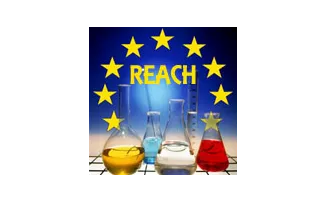
This review confirms that REACH�s aim to protect human health and the environment is becoming a reality. It has achieved its main purpose by making the use of chemicals safer mostly due to the significant increase in information since REACH came into force.
This has brought changes in classifications and hence more substance restrictions as well as improved SDS information, which has allowed for better risk management tools.
Additionally, the review revealed that significant efforts were made concerning the substitution of animal testing with different methods (read-across approach).
It also demonstrated that there were no major overlaps with other EU legislations and advised Member States to strengthen their coordination so as to improve the regulation�s enforcement.
It recommends certain measures to reduce REACH�s effect on SMEs:
- Revising the Fee Regulation to reduce the costs for SMEs
- ECHA should pay particular attention to SMEs and give more user-focused guidance as well as specific guidance on �transparency, non-discrimination and fair cost sharing in the framework of SIEF formation and operation�, as well as on the Use Descriptor System and on protecting intellectual property rights
- Increasing REACH awareness through Enterprise Europe Network (EEN) and national REACH helpdesks
- Integrating REACH processes at the earlier stages of R&D and other innovation processes
- Continued monitoring of SMEs� administrative costs
However, some issues were uncovered. ECHA found that the registration dossiers� data quality was a cause for concern, resulting in non-compliant dossiers. There was room for improvement in terms of registrants� capacity to assess PBT and vPvB properties. Furthermore, the industry found issues concerning the content and format of extended SDSs.
It is clear that some adjustments and work still need to be done for human health and environmental protection. Nevertheless, for the Commission to guarantee a stable and predictable legislation, it will not be making any major amendments to the regulation.
Read the European Commission�s press release Eubarometer Flash Survey on chemicals
The Eurobarometer survey, based on 25,557 interviews, will contribute to the Commission�s 2012 Review of REACH, providing information on the general public�s perception and understanding of chemical substances, as well as attitudes towards their safety and awareness of regulations.
- A majority believe that chemicals are present in daily products, 96 % believe that chemical substances are present in cleaning products and paint, 90 % believe that chemical substances are present cosmetics or beauty products. However, only 56% are certain of this.
- 81 % check the ingredients in food products before purchase as opposed to only 23 % checking electronic products
- 69 % of Europeans don�t believe removing chemical substances in their entirety from daily life is achievable
- More than 52 % believe that new chemical substances will not help in contributing to a better environment
- 75 % of Europeans believe that most industrial innovations involve new chemical substances.
- 46 % of Europeans would wait until a newly launched product containing new chemical substances had been proven to be working and safe over a long period of time prior to its purchase. Only 2 % would purchase a new product immediately.
- 61 % of Europeans believe chemical substances on the EU market are safer today than 10 years ago.
- 49 % of Europeans believe EU manufactured products containing chemical substances are safer than those imported from outside the EU.
- 48 % believe that the EU authorities are responsible for the products' safety, 42 % believe it�s the manufacturers and 35 % believe it�s the national authorities. 60 % believe the manufacturers should have this responsibility.
Article paru dans La Mol�cule 7
This review confirms that REACH�s aim to protect human health and the environment is becoming a reality. It has achieved its main purpose by making the use of chemicals safer mostly due to the significant increase in information since REACH came into force.
This has brought changes in classifications and hence more substance restrictions as well as improved SDS information, which has allowed for better risk management tools.
Additionally, the review revealed that significant efforts were made concerning the substitution of animal testing with different methods (read-across approach).
It also demonstrated that there were no major overlaps with other EU legislations and advised Member States to strengthen their coordination so as to improve the regulation�s enforcement.
It recommends certain measures to reduce REACH�s effect on SMEs:
- Revising the Fee Regulation to reduce the costs for SMEs
- ECHA should pay particular attention to SMEs and give more user-focused guidance as well as specific guidance on �transparency, non-discrimination and fair cost sharing in the framework of SIEF formation and operation�, as well as on the Use Descriptor System and on protecting intellectual property rights
- Increasing REACH awareness through Enterprise Europe Network (EEN) and national REACH helpdesks
- Integrating REACH processes at the earlier stages of R&D and other innovation processes
- Continued monitoring of SMEs� administrative costs
However, some issues were uncovered. ECHA found that the registration dossiers� data quality was a cause for concern, resulting in non-compliant dossiers. There was room for improvement in terms of registrants� capacity to assess PBT and vPvB properties. Furthermore, the industry found issues concerning the content and format of extended SDSs.
It is clear that some adjustments and work still need to be done for human health and environmental protection. Nevertheless, for the Commission to guarantee a stable and predictable legislation, it will not be making any major amendments to the regulation.
Read the European Commission�s press release Eubarometer Flash Survey on chemicals
The Eurobarometer survey, based on 25,557 interviews, will contribute to the Commission�s 2012 Review of REACH, providing information on the general public�s perception and understanding of chemical substances, as well as attitudes towards their safety and awareness of regulations.
- A majority believe that chemicals are present in daily products, 96 % believe that chemical substances are present in cleaning products and paint, 90 % believe that chemical substances are present cosmetics or beauty products. However, only 56% are certain of this.
- 81 % check the ingredients in food products before purchase as opposed to only 23 % checking electronic products
- 69 % of Europeans don�t believe removing chemical substances in their entirety from daily life is achievable
- More than 52 % believe that new chemical substances will not help in contributing to a better environment
- 75 % of Europeans believe that most industrial innovations involve new chemical substances.
- 46 % of Europeans would wait until a newly launched product containing new chemical substances had been proven to be working and safe over a long period of time prior to its purchase. Only 2 % would purchase a new product immediately.
- 61 % of Europeans believe chemical substances on the EU market are safer today than 10 years ago.
- 49 % of Europeans believe EU manufactured products containing chemical substances are safer than those imported from outside the EU.
- 48 % believe that the EU authorities are responsible for the products' safety, 42 % believe it�s the manufacturers and 35 % believe it�s the national authorities. 60 % believe the manufacturers should have this responsibility.
Article paru dans La Mol�cule 7







